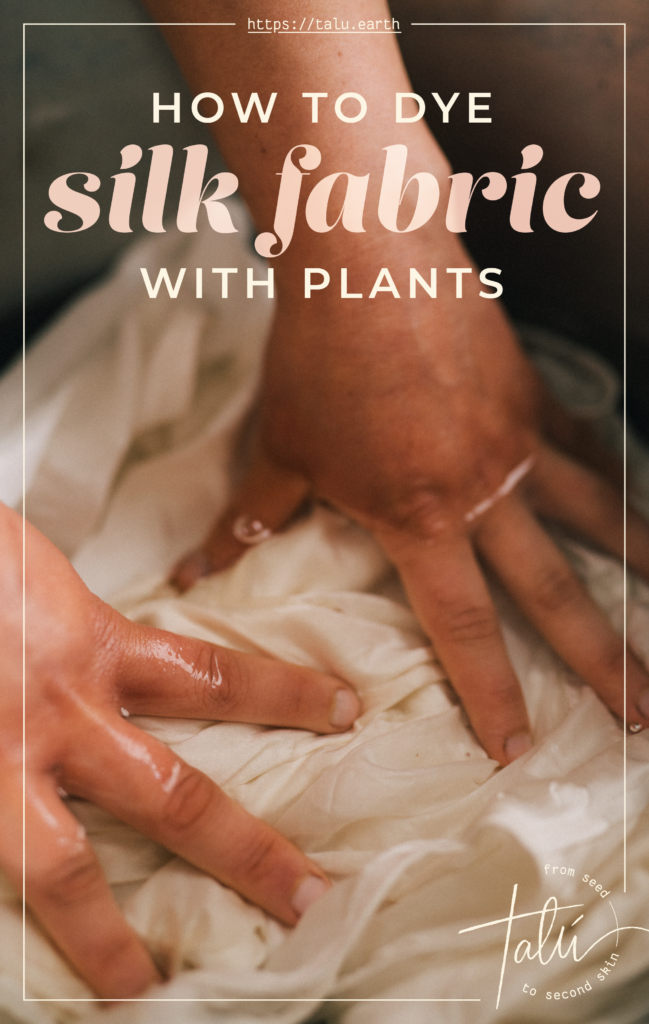On average, we’re not wearing at least 50% of our wardrobes.
It’s time we take matters into our own hands and embrace slow, circular fashion, fixing this worldwide issue one closet at a time. Learning how to dye silk fabric naturally can help.
We’re not wearing 50% of our wardrobes. At 80 billion new pieces of clothing being produced each year, that’s an incredible amount of waste.
Is silk actually a sustainable fibre?
Yes, silk can be sustainable! It isn’t technically a vegan material, so many people assume it can’t be sustainable. But that’s a common misconception.
You can read about the difference between “sustainable” and “cruelty-free” fabrics, but the long and short of it is that naturally-harvested silk does exist!
You can find ethically sourced silk that did not kill the silkworms in the harvesting process through projects like Peace Silk, Ahimsa Silk, and other non-violent silk.
Silk is biodegradable, renewable, and less water-intensive than many other fabrics.
However, its true sustainability is, as in all things, determined by the production and processing methods.
Harsh synthetic dyes can mean that silk will be harder to compost and still produce harmful chemicals that can leak into our soils. Mulberry trees (which silkworms use for food) typically do not require chemicals, but they are still sometimes used.
So, in general, look for wild-harvested, nonviolent silk that has been produced ethically in good conditions and has not been chemically dyed.
Instead, turn to plant-based dyes, which–turns out–you can create yourself! Here’s what to expect.
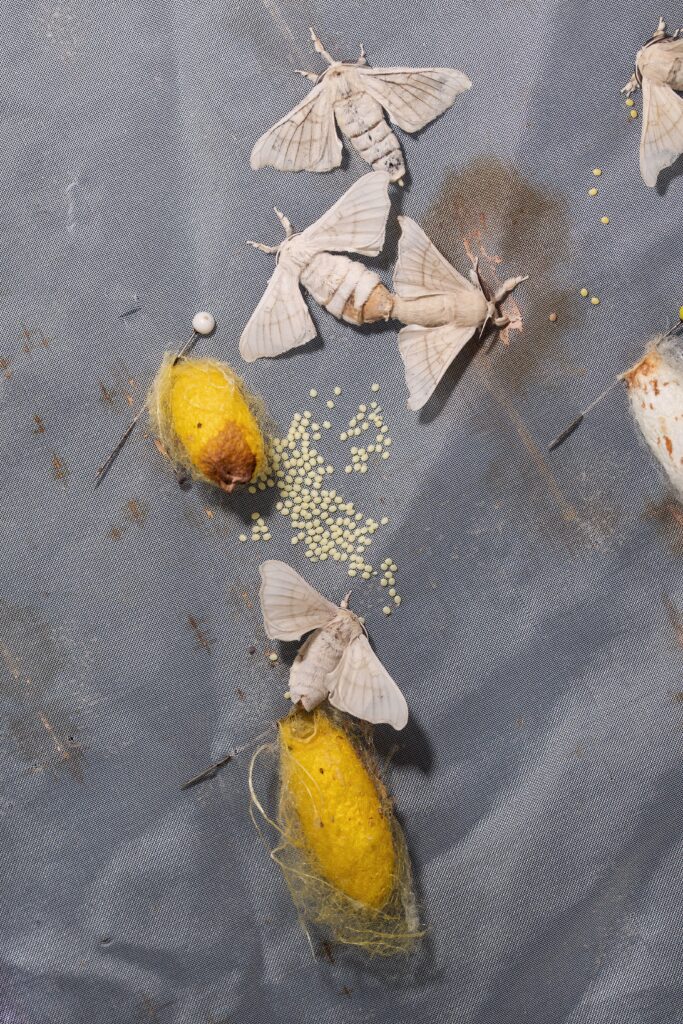
What types of silk are best for colour uptake?
All silk will dye beautifully! It’s made from protein, so it takes in colour even better than plant-based materials.
As a result, it’s one of the easiest fabrics to dye overall. Any natural dyes you can make will work very well.
I’ll list some potential ingredients at the end of this post, though you can also look through my blog post about what plants you can use for natural dyeing.
How to prepare silk for natural dyeing.
One of the most important parts of natural dyeing is learning to make your materials colour-fast.
A common complaint with any dye is colour fading over time or not becoming rich and saturated.
I go into everything you need to know for all common fibres in my Living Colours with the Five Elements natural dyeing workshop, but I’ll also explain the silk-specific process below.
The preparation steps to scour and mordant your fabrics before dyeing will ensure that your colour takes perfectly. Scouring simply means to give the silk a deep clean so it can be as efficient as possible at absorbing the colour. Mordanting means to pre-treat the silk to ensure the colour compounds will bind to the fibres.
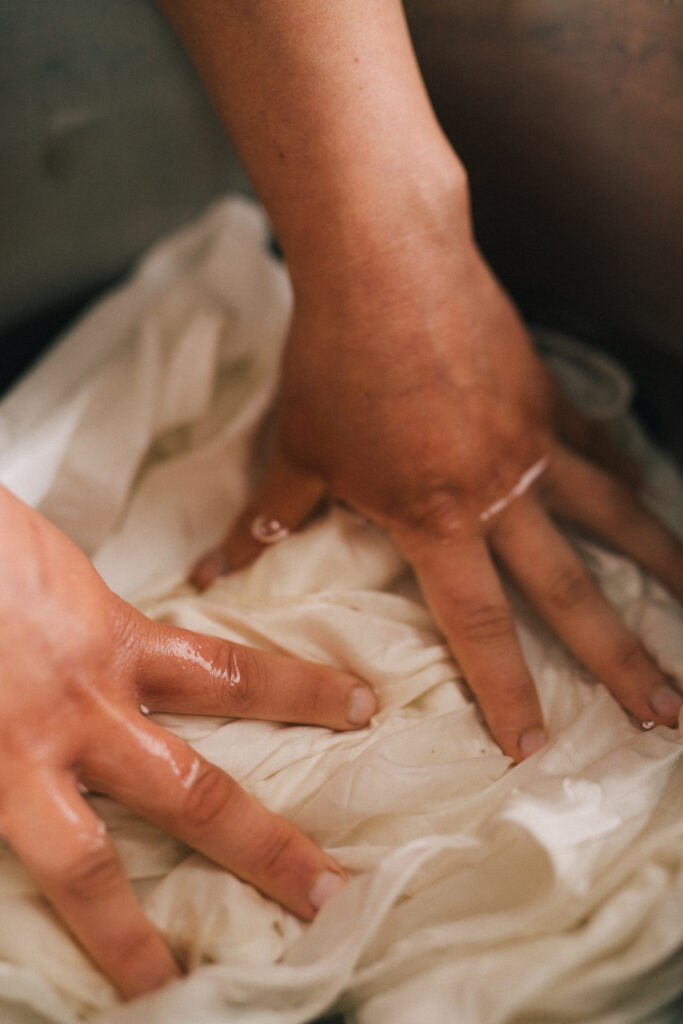
You will need:
- Silk fibres you’ll dye
- Kitchen scales
- A pot, specifically for dyeing
- A heat source
- Wooden spoon or stick, specifically for dyeing
- Neutral soap or detergent
- Gloves and face mask
- Alum (Potassium aluminium sulphate)
How to scour your silk:
- Weigh your dry silk. Write down the weight – you’ll need it later. (WOF = Weight Of Fibre.)
- Fill your pot with room temperature water, enough so that your silk can move freely.
- Add 5mL or 5g of soft, pH-neutral detergent free from any additives for each 200g of dry silk you plan to scour. Dissolve thoroughly.
- Add your silk to the pot.
- Bring the water to a low simmer and leave for one hour. DO NOT let the water boil, it might damage your material.
- Gently and constantly stir the pot, and add more hot water if needed so the silk can stay covered and keep moving freely.
- After one hour, turn off the heat and let the fabric cool down in the pot.
- Once at room temperature, lightly rinse the silk with room temperature water.
- Proceed to the next step: to mordant.
You can get rid of the remaining scouring solution right down the drain. If you used biodegradable soap, you can also pour the water out on the ground outside–but not directly on top of any plants, and never less than 60m from a body of water such as a lake, river, or sea.
How to mordant your silk:
- In a heat-resistant jar, pour hot or boiling water and 7% of your original weight of fibre (WOF) in alum. Stir to dissolve thoroughly.
- Fill your pot with enough room temperature water to completely cover your silk. Add in the dissolved alum.
- Add your already-scoured silk to the pot and bring it to a low simmer. Once it reaches a simmer, turn off the heat and keep the lid on–you want it to stay warm for as long as possible.
- Leave your silk in the pot for at least 2 hours, preferably overnight. Gently stir the silk often, making sure not to breathe in the vapours directly when opening the pot.
- USING YOUR GLOVES, take the silk out of the mordanting bath and either lay it to dry or go straight to the dyeing step. Do not wring. Do not dry under direct sunlight.
You can dispose of the remaining scouring solution down the drain or directly onto soil, but never on top of a plant or less than 60m from any body of water.
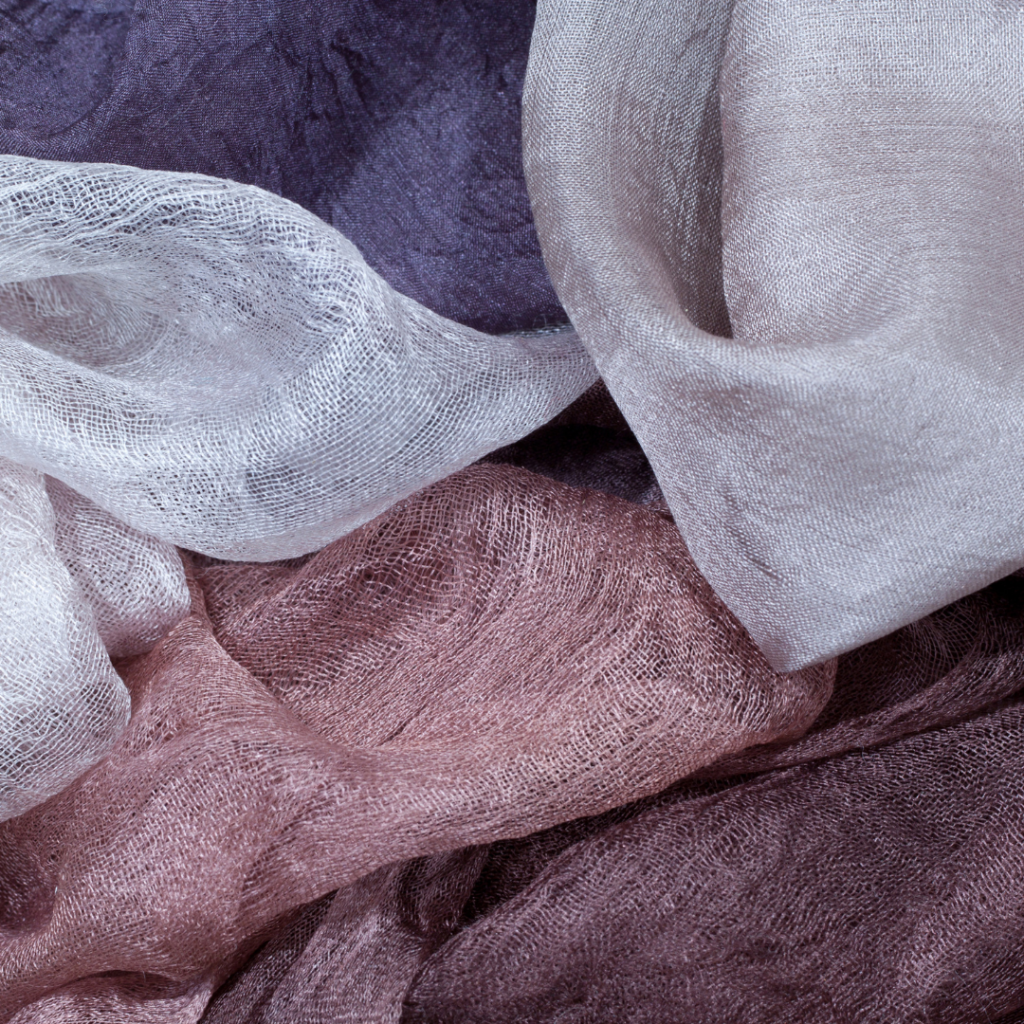
Now it’s time to get into natural dyeing and how to dye silk, step by step!
I’ve written about how to dye clothes naturally before, so you can read that post for all the ingredients and step-by-step details. Together with your new knowledge about how to scour and mordant silk, you’re golden.
But today we’re talking about silk specifically! And though any natural dye will work brilliantly with silk, a few dyes take particularly well:
- Henna (Lawsonia inermis)
- Dyer’s Chamomile (Anthemis tinctoria)
- Brazilwood (Haematoxylum brasiletto)
- Logwood (Haematoxylum campechianum)
- Sappanwood (Caesalpinia sappan)
- Cochineal (Dactylopius coccus) – okay, this one is technically an insect, not a plant. But I’m giving it special mention because it works incredibly well with silk, a protein-based fibre, and not as well with cellulose-based materials.
This list is more about which dyes work best with silk, because its natural proteins bond to colour compounds quite well. Again, you can really use any dyestuffs you like.
And, as I mentioned in my post on how to make blue dye for clothes, fresh indigo is an ideal plant to use with silk! This is because the blue colour contained within the leaves of Japanese indigo will bind especially well to this protein-based material.
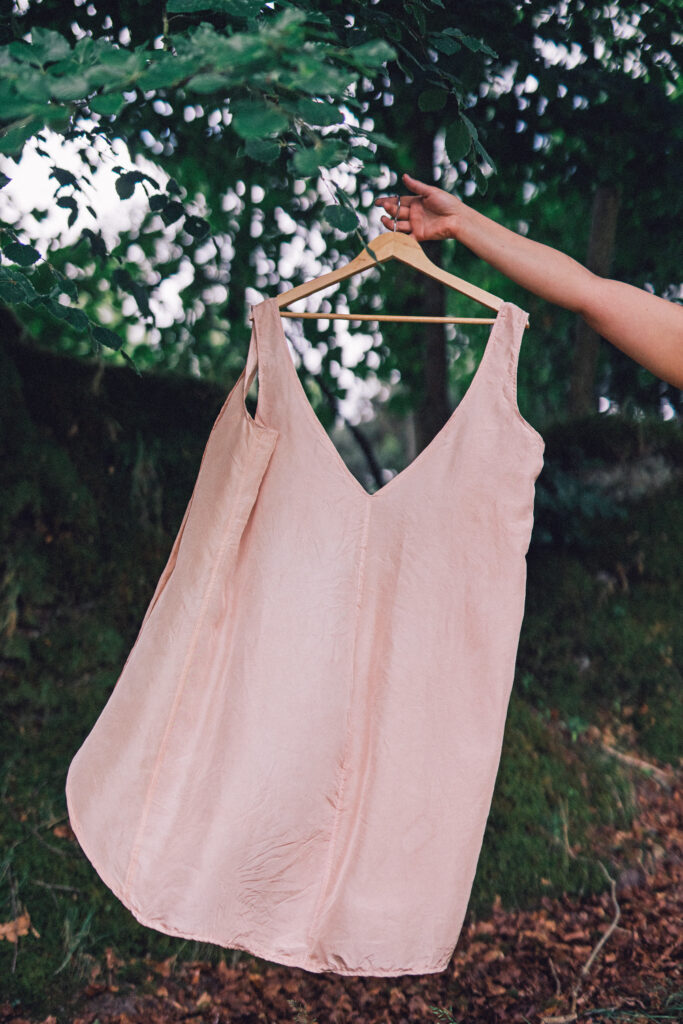
Now that you know everything about the basics of how to dye silk fabric, take your skills to a deeper level
If you’ve fallen in love with the natural dyeing process, you’re in good company!
I have a passion for creating natural dyes, and I love all the intricacies of the process. Textures, fibres, and dyestuffs all have little tricks that only come with experience and careful guidance.
If you want to learn everything you can, you might be interested in my Living Colours with the Five Elements natural dyeing workshop! I hope to see you there.
Pin this post!
